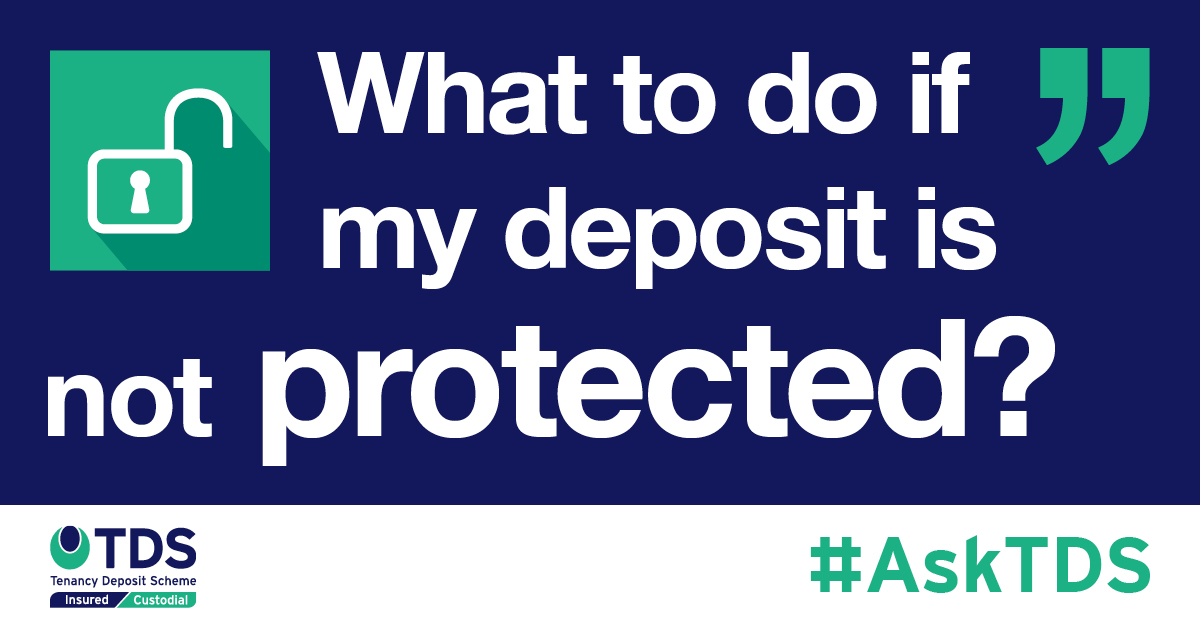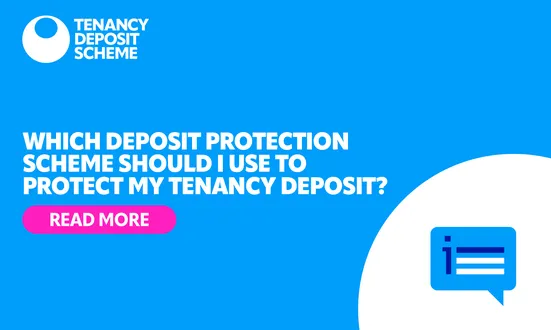The Tenancy Deposit Scheme (TDS) is a government approved scheme for the protection of tenancy deposits; we offer both insured and custodial protection. We also provide impartial adjudication for disputes that arise over the deductions from the tenancy deposits that we protect. This article has been written in response to a tenant’s query: “What to do if my deposit isn’t protected?”

Deposit protection has been a legal requirement for landlords since April 2007. Landlords have the choice of using a custodial scheme or an insured scheme through a government approved provider such as TDS.
 If your deposit has been unprotected
If your deposit has been unprotected
The deposit should remain protected for the duration of the tenancy, although there may be cases where your landlord or agent decides to change which scheme the deposit is protected with, in which case you should receive updated deposit protection documentation.
There are various circumstances in which you should receive updated deposit protection documentation, such as (but not limited to):
- If there is a change in landlord
- If there is a change in tenant
- If there is a change in tenancy address
- If there is a change in scheme
If your deposit is unprotected, this usually means that a landlord has notified the Tenancy Deposit Scheme that your tenancy has ended, or that your deposit has been protected with another scheme (usually due to a change in managing agent, or after the sale of a property to a landlord who uses a different scheme).
If this is not the case, you should reach out to the scheme that your deposit was last protected with. In the Insured scheme, even though the deposit protection has been marked as ended, the Tenancy Deposit Scheme will continue to offer protection for three months, to ensure that you have access to our dispute resolution service if you do not agree with the landlord retaining your deposit.
 If your deposit was not protected at the start of the tenancy
If your deposit was not protected at the start of the tenancy
The landlord (or agent on their behalf) should protect your deposit and provide you with prescribed information within 30 days of receiving the deposit. If you haven’t received notification as to your deposit protection, you may want to check this with your landlord or agent.
If you think your deposit has not been protected you should contact each of the three government approved providers to ensure that this is the case. If none of the schemes have any record of your deposit you can seek advice from Shelter or your local Citizens Advice Bureau (CAB), or reach out to your local county court to ask them for assistance. It is important to note that the deposit protection schemes will only check against the details you provide so you should ensure that you provide the correct start date, address and landlord name.
While we recommend opening communications with your landlord before going to court, you may initiate court proceedings against your landlord. The courts will consider your evidence and if they agree your deposit has not been protected they will then ask your landlord to either:
- Return the deposit to you
- Pay the deposit into a custodial scheme within 14 days
The court may order the landlord to pay you between one and three times the original deposit amount.
 What to do if your deposit is not protected
What to do if your deposit is not protected
If you suspect that it has not been protected you should follow these steps:
- Contact the deposit protection schemes and enquire if your deposit is registered with them
- If your deposit has not been protected you can contact your landlord and ask them to do so immediately
- You can contact your local county court and start proceedings against your landlord
- If it is found that your landlord has not protected your deposit they will be ordered to either repay it to you, or to pay it into a custodial scheme within 14 days
The majority of landlords and agents are aware of their responsibilities and will have registered your deposit with one of the three schemes. In cases where an agent goes into liquidation, TDS will write to tenants giving them a time limited opportunity to submit an application. This application will allow the tenant to raise a dispute at the end of the tenancy, whenever that may be, and TDS will honour the protection. These measures are in place to ensure the tenant is not left out of pocket through no fault of their own.
Find out if your deposit is protected with TDS, or read our blog about when a tenant can expect their deposit to be returned.
Other news stories


